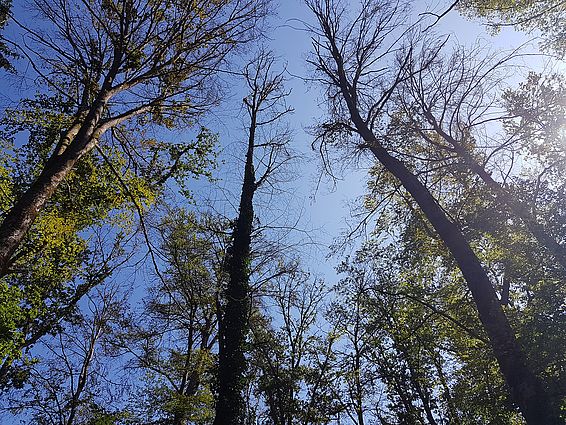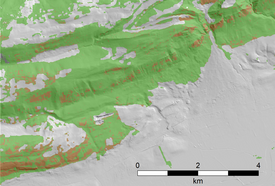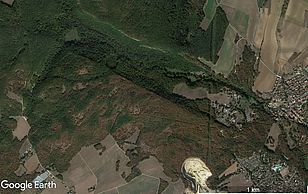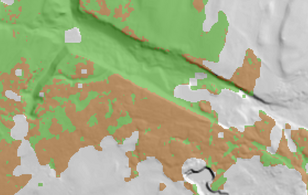2.11.2020 | Beate Kittl | News WSL
In ten percent of forests in central Europe, trees lost some or all of their leaves too early in the dry summer of 2018. This is shown by calculations and satellite image analyses of the Swiss Federal Institute for Forest, Snow and Landscape Research WSL. Central and eastern Germany along with the Czech Republic were the most severely affected. Since it was less hot and dry in the mountains, Swiss forests suffered less damage.
The drought affected forests in northern Switzerland, at the southern foot of the Jura and in the main valley of the Valais most severely, as the WSL research team reports in the journal Global Change Biology. It had programmed a computational model (algorithm) that used aerial photographs and satellite measurements to calculate the distribution of early foliage fall throughout central Europe – from northern Germany to northern Italy. Thanks to the new Sentinel earth observation satellites, this was possible for the first time in very high temporal (one image every 2-3 days) and spatial resolution (10x10 metres).
The researchers also wanted to know which factors posed a particular risk of drought damage, such as soil depth and moisture, slope inclination and vegetation height. For this purpose, they used models developed at WSL that can show the vegetation hight and the water balance for the whole of Switzerland.
Severely affected locations
The result: Trees suffered most in warm, dry regions, where it was even hotter and drier than the long-term average, especially if they tended to be small to medium-sized and stood on steep terrain and shallow soils. In future, such locations and tree characteristics can thus be classified as risk factors for drought damage. “In a further step, we want to make a prediction model that can predict the potential damage to large forest areas,” says Philipp Brun, who conducted the study together with colleagues from WSL and the University of Grenoble Alpes.
Spruces have suffered heavily
Deciduous and coniferous trees can be distinguished on the high-resolution satellite images. While in Switzerland, mainly deciduous trees, particularly beeches, dropped their leaves prematurely, spruces were more affected over the whole of central Europe. A complete loss of needles is fatal for them. Later, many spruces weakened by the drought also died of bark beetle infestation.
In many countries, spruce trees have been planted over the last 150 years extensively at the warm and dry limits of their distribution area, explains Brun. In 2018, both beech and spruce would have suffered conditions that were outside their tolerance range in many locations.
In the summer of 2018, central Europe experienced its most extreme period of drought and heat wave since measurements began. It has had a greater impact on forests than any other dry spell in the last 60 years. “If such events occur more frequently, beech and spruce will probably have difficulty surviving in the longer term in the regions affected in 2018,” says study leader Niklaus Zimmermann, ecologist at WSL. Oak trees that need less water and are therefore better able to cope with drought have shown little leaf fall in the same regions.
Contact
Links
This research was part of the WSL Drought Initiative 2018
drought.ch: predicting drought
Publications
Copyright
WSL and SLF provide the artwork for imaging of press articles relating to this media release for free. Transferring and saving the images in image databases and saving of images by third parties is not allowed.



